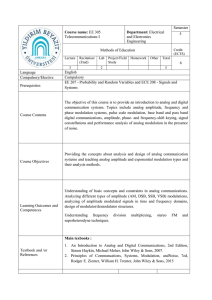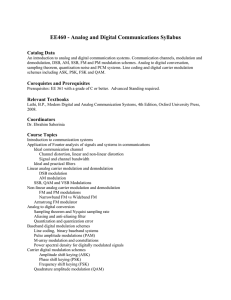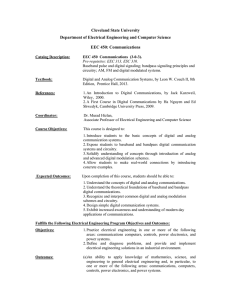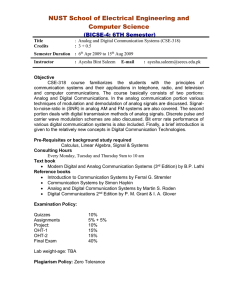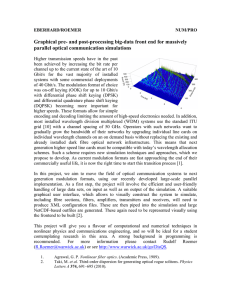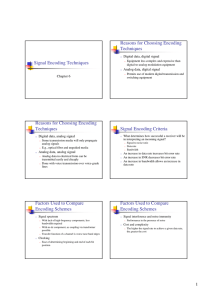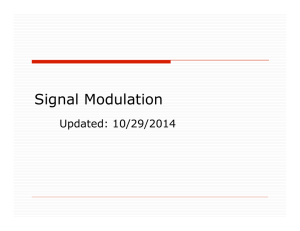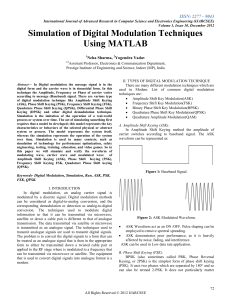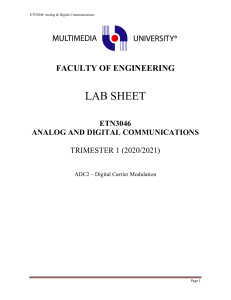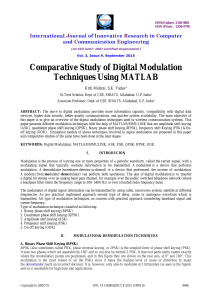Cleveland State University Department of Electrical Engineering and Computer Engineering
advertisement
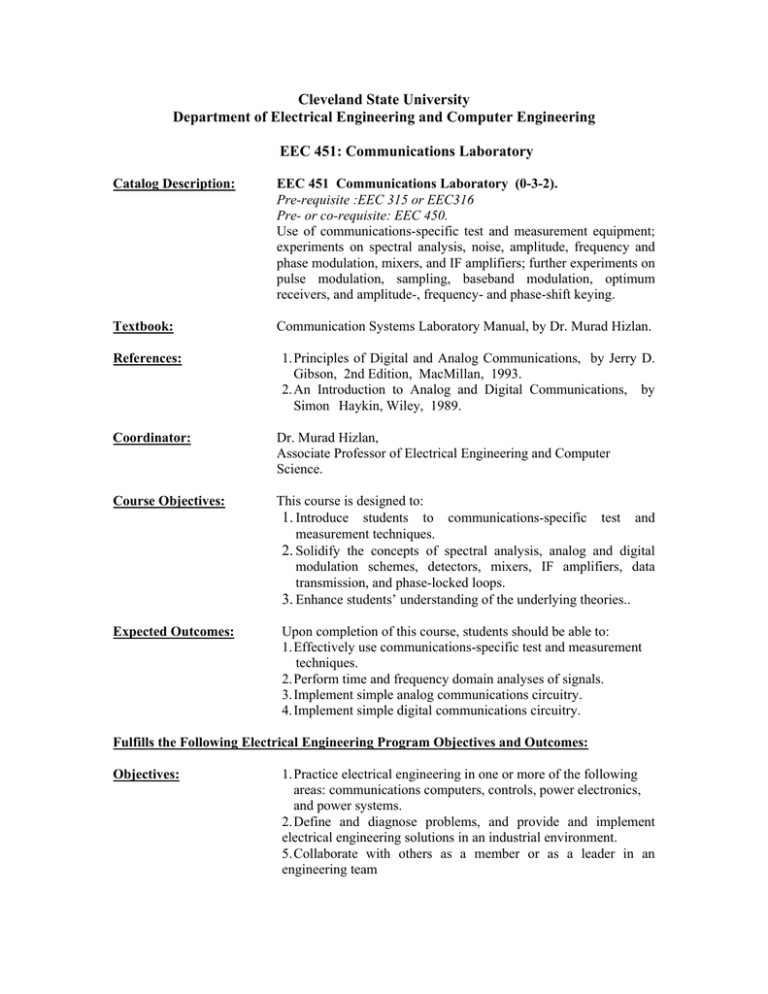
Cleveland State University Department of Electrical Engineering and Computer Engineering EEC 451: Communications Laboratory Catalog Description: EEC 451 Communications Laboratory (0-3-2). Pre-requisite :EEC 315 or EEC316 Pre- or co-requisite: EEC 450. Use of communications-specific test and measurement equipment; experiments on spectral analysis, noise, amplitude, frequency and phase modulation, mixers, and IF amplifiers; further experiments on pulse modulation, sampling, baseband modulation, optimum receivers, and amplitude-, frequency- and phase-shift keying. Textbook: Communication Systems Laboratory Manual, by Dr. Murad Hizlan. References: 1. Principles of Digital and Analog Communications, by Jerry D. Gibson, 2nd Edition, MacMillan, 1993. 2. An Introduction to Analog and Digital Communications, by Simon Haykin, Wiley, 1989. Coordinator: Dr. Murad Hizlan, Associate Professor of Electrical Engineering and Computer Science. Course Objectives: This course is designed to: 1. Introduce students to communications-specific test and measurement techniques. 2. Solidify the concepts of spectral analysis, analog and digital modulation schemes, detectors, mixers, IF amplifiers, data transmission, and phase-locked loops. 3. Enhance students’ understanding of the underlying theories.. Expected Outcomes: Upon completion of this course, students should be able to: 1. Effectively use communications-specific test and measurement techniques. 2. Perform time and frequency domain analyses of signals. 3. Implement simple analog communications circuitry. 4. Implement simple digital communications circuitry. Fulfills the Following Electrical Engineering Program Objectives and Outcomes: Objectives: 1. Practice electrical engineering in one or more of the following areas: communications computers, controls, power electronics, and power systems. 2. Define and diagnose problems, and provide and implement electrical engineering solutions in an industrial environment. 5. Collaborate with others as a member or as a leader in an engineering team Outcomes: (a)An ability to apply knowledge of mathematics, science, and engineering to general electrical engineering and, in particular, to one or more of the following areas: communications, computers, controls, power electronics, and power systems. (b) An ability to design and conduct electrical engineering experiments, as well as to analyze and interpret data (c)An ability to design a system, component, or process to meet desired needs. (e) Ability to identify, formulate, and solve electrical engineering problems. (g) Ability to communicate effectively. (k)An ability to use the techniques, skills, and modem engineering tools necessary for electrical engineering practice. Contribution of Course to Meeting the Professional Component: Math & Basic Science: 0 credits; Engineering Topics: 2 credits; General Education: 0 credits Prerequisites by Topic: 1. Laboratory experience 2. Electronic circuits 3. Analog and digital communications (pre- or corequisite) Topics: 1. Arbitrary waveform generation 2. Spectral analysis 3. Noise 4. Amplitude modulation and demodulation 5. Intermediate frequency amplifiers 6. Mixer circuits 7. Frequency modulation 8. FM demodulation 9. Amplitude-shift keying and phase-shift keying 10. Frequency-shift keying 11. Baseband data transmission 12. Phase-locked loops Total: Computer Usage: Design Projects: Non-Design Projects: 3 3 3 3 3 3 3 3 3 3 3 3 36 Students are expected to use word-processing packages for the preparation of their laboratory reports. They also use a software package to download scope screen images. None. None. Prepared by: Dr. Murad Hizlan Revised by: Dr. Fuqin Xiong (add outcomes (e) and (g)) Date: May 2010 Date: July 12, 2011
